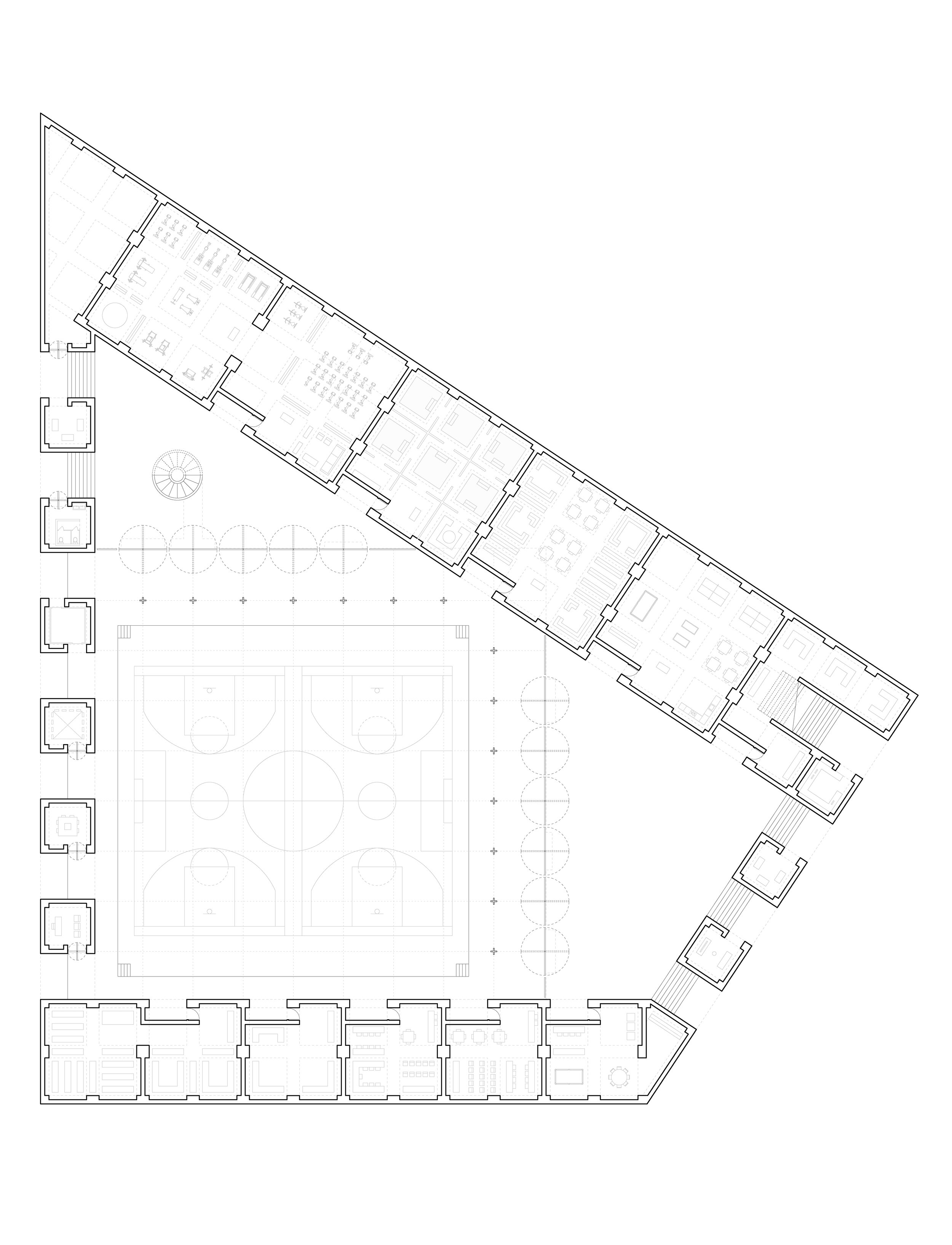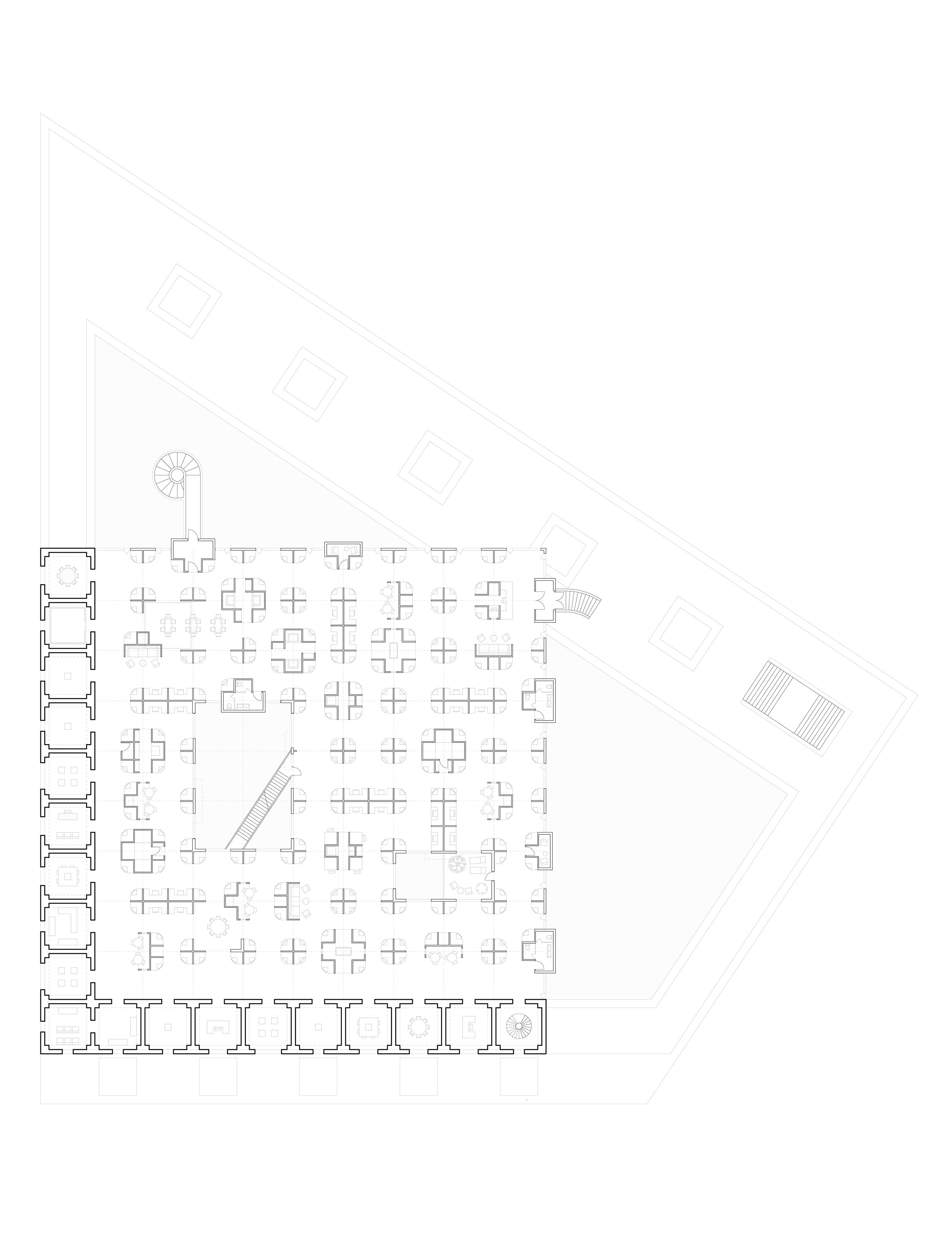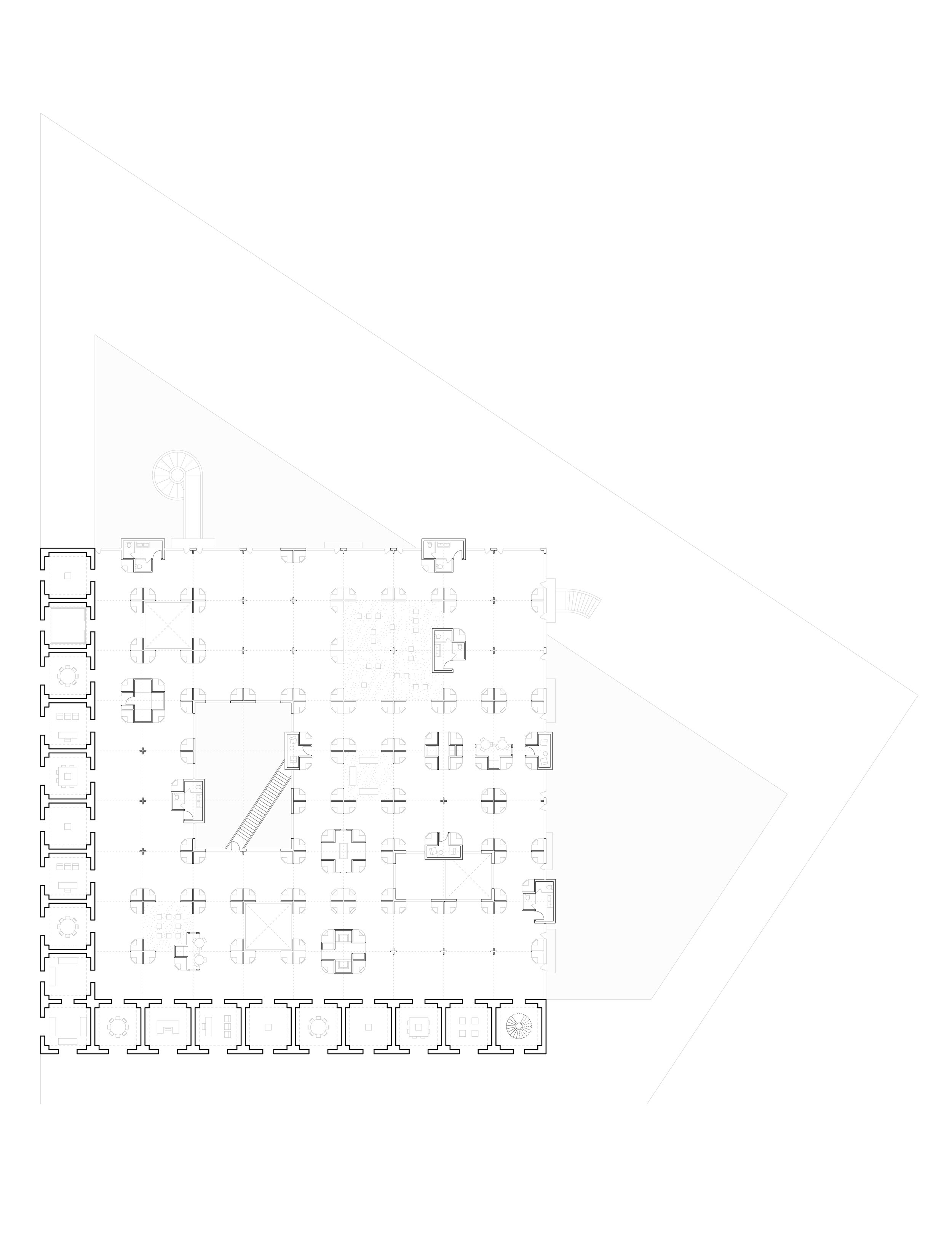Call Center
A call center in Tijuana, Mexico
with Matthias Arauco / Prof. Marcel Sanchez, Adriana Cuellar and Cesar Lopez / UC Berkeley, Spring 2020



Borders of vulnerability due to the Tijuana River channel, the historic Tijuana River extents, flooding and erosion, and isochrone of 15 minutes of travel to reach downtown
Using perfect intersections as indications of planning and investment, these diagrams reveal the disinvestment of communities correlated with increasing degrees of tributary.
This project is a provocation of the responsibility of a call center at all scales. It questions the role of equity, agency and ownership in an architecture that offers more than a blank slate. It is an inquiry into the messy, dirty, ugly, unexpected and unplanned that can arise from order. It celebrates friction, misinterprets territory and misuses architectural elements. This project asks if a thing can be dissolved through its complete and unapologetic exaggeration.
Tijuana is embedded with layers of edges. From the most obvious and physical edge of the U.S. / Mexico border to the remnants of geographic history such as the channelization of the Tijuana River, edges divide communities and exacerbate social divisions. Deportees, who make up the majority of the call center worker population, are placed against their will into a context with which they likely have never known. Typical call center workplaces create archipelagic conditions, further isolating deportees from the city. By thickening the site perimeter, this project subverts archipelagic language to convert a violent urban element into a unifying and inhabitable edge. A territorial boundary lifted, deportees become embedded in rather than isolated from the city. The perimeter of amicability fostered within the workspace is extended to include community members, with whom deportees are encouraged to build relationships through shared spaces and activities which occupy peripheries.
By facilitating the occupation of edges, nested scales of interiority are created. Residual space is left for informal and happenstance interactions and programs. The thick perimeter wall extends into the workspace, again subverted to form open spaces, while the porous building edges are reserved for individual programs such as restrooms and phone rooms. This aids in mitigating the power dynamic typical of workspaces, by placing executive offices in open spaces connected to conference and break rooms, for example. Grid intersections, typically urban indications of investment, are infused with program in order to create opportunity to occupy edges of informal residual spaces in the office field condition. A catalog of grid intersections fill the field, leaving room in between for collaboration and informal interactions. Perception of smaller interiors framed by infused grid intersections insights a sense of ownership and agency in a field condition, equalizing the work plane further. The formal language of the thickened wall below is lifted inside of the workspace, allowing for disorder and messiness inside the ever-changing workspace. The main building volume, lifted to encourage circulation through public spaces during the workday, is punctured to allow light to pass onto the sunken plaza.
Urban passage between the site’s two adjacent streets is maintained but convoluted, encouraging interaction between community members and workers in a sunken public space filled with recreational activities. The thick peripheral wall becomes an enabler and backdrop for informal economies, activating each street with vendors, artisans and performers. This perimeter occupation further embeds deportees in the economies and social dynamics of the city. The public space enclosed by and on top of the thick perimeter wall is used for a variety of informal activities, such as weekly markets, concerts and community gatherings. The formal and informal uses of edge facilitate happenstance meetings between deportees and members of the community, combatting the isolating tendencies of a workspace. This project aims to exaggerate archipelagic formal language to the extent of the dissolution and subversion of the archipelago.